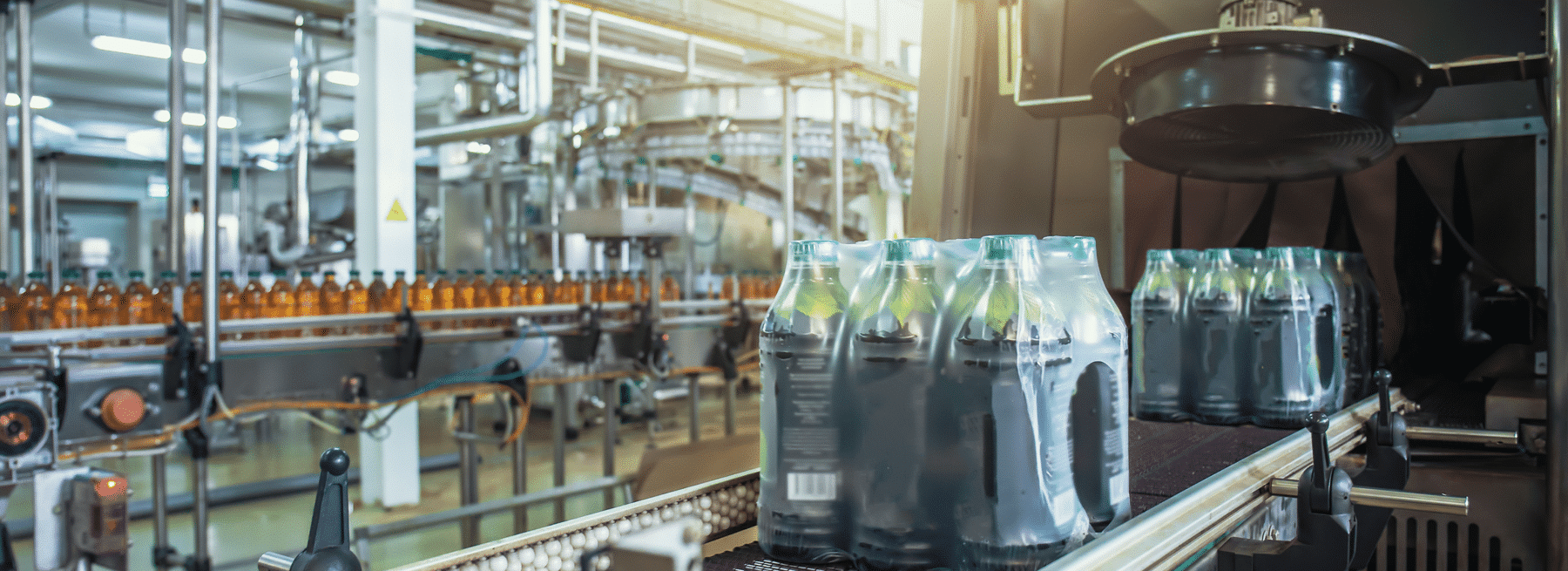Despite the return to normalcy, the food and beverage industry still has an uphill battle to climb as the prices of everyday staples continue to be notably higher than the norm. Inflation has a huge impact as NextAdvisor confirms inflation hit a 40-year high in December 2021. This has forced customers to change their buying habits. They may stop purchasing certain items or swap them with generic or cheaper substitutes.
It’s important to keep the prices of items in mind when reviewing the top trends in 2023 for the food and beverage industry.
1. Dealing with the Rising Costs
The industry is having to get creative with operations and pricing to adapt to the side effects of inflation. Things like the war between Ukraine and Russia affects the industry. A Dallas Morning News story states the world’s largest production of wheat and corn is in the Ukraine. Unfortunately, North America has seen its imports cut in half. With less supply comes high prices. This is happening in spite of the U.S. having a surplus of corn and wheat.
It’s not just humans who depend on food. Corn and soybean meal have an important role in the food chain as they feed cows and chickens. The increased cost of corn and soybeans has led to higher costs of other products, such as chicken and pork proteins.
Many large companies have been laying off employees. This affects their spending ability as they cut back wherever they can. The food and beverage industry needs to look for options to help curb costs.
2. Moving Toward Value-based Spending
As previously mentioned, inflation is driving consumers to change how they shop. They’re being more intentional by focusing on value-based spending. They want to see value in their purchases. This means they look for value beyond price.
One way companies are delivering on this is by providing online grocery ordering for pickup or delivery. Another option is providing meal kits to simplify meal preparation. Customers want brands that have core values similar to their own, such as focusing on sustainability and quality. Consumers desire brands they can trust and have confidence in how they develop their products.
3. Growing Interest in Plant-based Products
The plant-based food industry is multiplying as Bloomberg reports on the expectations that it will explode to $162 billion by 2030, which is up from almost $30 billion in 2020.
Plant-based products are gaining popularity as more people switch to vegetarian or vegan diets. It’s also easier to find more products today than 10 years ago. However, remember inflation has made frequently-bought products more expensive. Before inflation, plant-based meat alternatives tended to be more expensive. Companies need to get creative to make plant-based foods more accessible in price.
Many experts say that plant-based food is not a trend. It’s expected to stay because it’s more sustainable and healthier. Sustainability has become a top priority for customers especially the younger generations. Therefore, companies need to be transparent about their sustainability practices.
4. Investing More in Technology
A lot of manufacturing facilities still rely on manual processes. Digitizing processes could help cut the number of errors by humans and eliminate non-value-added work. If you’ve digitalized some processes, you may have outdated technologies. The world has seen a lot of technological advancements in newer technology that are faster and more efficient.
Some food and beverage companies view digitizing and technology investments as IT initiatives. It really needs to be part of the company’s business strategy. This is because digitalization affects every part of the business. Besides, you may be able to do some integrations that enhance operational efficiencies.
Also worth exploring are technologies like automated mobile robots (AMR). They’re faster and can ease the pains of labor shortage. AMRs make it possible for workers to do more value-added tasks and fewer repetitive tasks.
A huge benefit of becoming a more digitalized business is that it will help attract Generation Z workers. They like working with technology to remotely control machines and systems. Companies need to take a different approach to entice Gen Z to come work for them. This includes flexibility, diversity, mental health support, and work-life harmony.
One technology that can benefit the food and beverage industry in many ways is video surveillance with monitoring.
The Value of Video Technology in the Food and Beverage Industry
The higher cost of food and beverages has put the food and beverage industry at a greater risk for theft. Organized crime gangs target food and beverage related products because they’re harder to trace than others. These products are consumable, which means they leave little to no evidence. As a result, they know there’s less risk of getting caught.
Moreover, the food and beverage industry is beholden to strict food safety guidelines. Video surveillance with remote monitoring can help with that. The cameras can capture any potential unsafe practices or safety hazards.
External factors can greatly affect the industry’s ability to stay on target with its production goals. For instance, tariffs and the high cost of ingredients may prove challenging for them to get what they need for manufacturing. If anything breaks, it may be difficult to find replacement parts or even ones that are affordable.
Incorporating security cameras and adding remote monitoring can help increase security in food and beverage facilities. They can also help enhance safety for everyone. Considering how brittle the supply chain remains, remote video surveillance can help protect the facility’s supplies. Anything that can deter theft minimizes the supply chain’s impacts.
One thing that is important to know is that there is not one single technology solution that can do it all when it comes to physical security. A facility that wants to maximize security and safety will put processes and procedures in place. They also develop a security plan that helps ensure the security features multiple layers. This can be as simple as adding fencing and lighting.
This is where video surveillance with remote monitoring stands out from other security solutions. It comes built-in with multiple layers of security, safety, and protection. It helps food and beverage companies verify they’re following laws related to food safety or catch problems early.
How Food and Beverage Remote Video Surveillance Works
Video surveillance with monitoring can help deter crime or lead to an arrest before intruders leave the property or cause damage. Here’s how security cameras with remote monitoring can add multiple layers of security. The first preventive is the visibility of video cameras. Some trespassers will leave a food and beverage facility and go elsewhere when they see the cameras. Unfortunately, there are more brazen thieves who will ignore the cameras.
The next preventive is a trained security operator, working in a remote location, monitoring live surveillance cameras. The cameras have video analytics built in to look for any activity that falls outside of pre-programmed parameters. When something is spotted, the monitoring operator can quickly assess the situation and take action. This could include issuing a warning over an on-site speaker. This causes some suspects to leave the property, but that’s not always the case for the growing number of organized crime gangs and brazen thieves.
If the criminals continue to work their way into the facility, then the monitoring operator can contact the police. As the police work their way to the facility, the operator can follow the suspects with the cameras and continuously updates the emergency dispatcher.
In the case of intruders departing the scene of the crime prior to law enforcement’s arrival, video analysts can search and pull out the footage and forward that to the police to use it to identify the suspects and arrest them. This is why it’s imperative to invest in the right video monitoring technology with high-resolution video. Not all video cameras have the ability to make out faces and details.
The video surveillance system can capture and save everything it records. Video analysts can review the recordings anytime the facility needs them. This supplies you with the proof you need for crimes, false liability claims, and other problems.
Observing the monitors for hours is a mind-numbing task. That’s why the best proactive video surveillance combines video analytics and human intelligence. Integrated video analytics eases the trained monitoring operator’s load. At the same time, it can increase the chances of catching a potential problem early. Together, they work to identify and report facility problems and safety hazards.
Sometimes companies discover a problem that occurred days or weeks ago. It’s possible to review and pull older footage. The cameras will also continue to record during non-monitoring hours to capture anything that may occur during those hours. In doing your research for a video surveillance company, ask about video retention.
The other advantage of video surveillance is that it can help prevent false alarms from being called in. Some cities charge a fee for false alarms. That’s why it’s critical to have a human operator involved. They can get video verification of whether something is a false alarm or an emergency.
Real-time video surveillance with monitoring can give everyone peace of mind knowing that someone is watching over the entire food and beverage facility and ready to call in when there’s a problem.
Stealth Monitoring’s proactive video surveillance with monitoring does more than help prevent crime, stave off injuries, and make it safer. Watching over all of the assets is a critical function especially with the limping supply chain. The food and beverage industry must do what it can to hold on to its assets and inventory. When they don’t, then inflation and supply chain problems could have a detrimental effect on the business.
Remote video surveillance can watch over the entire property in and around the food and beverage facility. The technology can deter crime, enhance facility productivity, boost safety, and reduce liability. To learn more, pick up “Remote Video Monitoring: More Than Just Catching Criminals.” If you want to learn more about video security and monitoring, please contact us.
Texas Private Security License Number: B14187

